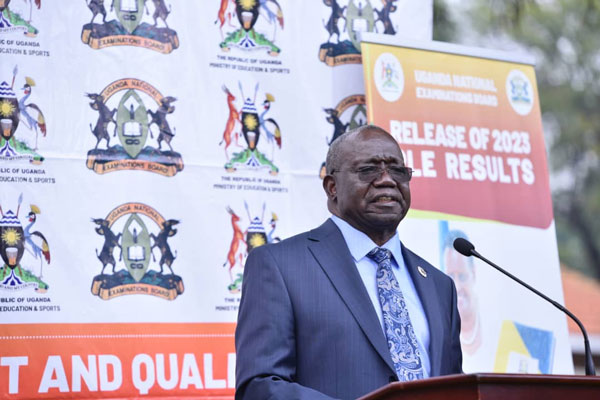
PLE Results; Number Of Absentee Candidates Drops To Lowest
Kampala, Uganda | THE INDEPENDENT | The number of learners who register for Primary Leaving Examination – PLE and fail to turn up on the examination day has steadily decreased to the lowest point.
During the release of the examination results on Thursday afternoon, Dan Odongo, the Executive Director of the Uganda Examinations Board, noted that last year’s examination saw the lowest number of absentees in the last five examination cycles.
According to UNEB’s analysis of the 2023 examination results, out of the 749,254 candidates who were registered for the examination, 1.6 percent of them which is total of 12,323 pupils, did not appear for the exam.
The trend for absentee candidates indicated a slight reduction. In the 2020 examination cycle, which took place in 2021 due to COVID-19 disruptions, the number of absentees decreased to 1.7 percent of the registered candidates. However, in 2022, there was a sharp increase, with 20,844 out of the 832,654 registered candidates, accounting for 2.5 percent, failing to turn up.
Often, students who register but do not attend the examination include those who become ill or incapacitated and are unable to participate. Additionally, some students are refused the opportunity to sit the exam by school authorities due to unpaid school fees balances. Furthermore, there are instances where students arrive late at the examination center and are consequently denied entry, in adherence to regulations, among other reasons.
During the examination release, Janet Kataaha Museveni, the Minister of Education and Sports, expressed her satisfaction that the negative trend of absentee candidates in PLE has been reversed. However, she acknowledged that the figure of over 12,000 absentee candidates is still substantial.
She emphasized that those who fail to attend represent a significant loss as some may drop out of education, not to mention the resources incurred by the government and their parents.
According to the report, Wakiso district recorded the highest number of absentees in the primary leaving examination, with a total of 850 candidates out of 65,081 registered candidates failing to show up on the examination day. In Kampala, 382 candidates did not turn up, while in Kayunga, 256 candidates were absent.
On the other hand, Kaberamaido and Kalangala had the lowest absentee rates, with just one candidate failing to turn up in each district. Other districts with fewer absentees included Moyo and Kween, each having only four candidates, and Kalaki with three absentee candidates.
Where are the boys?
During the release of the examination results, the Minister of Education and Sports also expressed concern over the ongoing decline in the number of boys completing primary education in Uganda.
While Uganda has made significant progress in achieving gender parity in access to primary education for both boys and girls over the years, records from UNEB reveal that more girls are completing the primary education cycle.
UNEB statistics show 391,499 registered female candidates compared to 357,755 males. Odongo noted that this trend has persisted for the last seven years, with the gap gradually widening each year.
“Why is the boy child not completing Primary?” questioned the First Lady, urging concerned parties to prescribe solutions that can address the fundamental causes and prevent this negative trend.
While there is a growing concern about boy children, especially when the country has focused efforts on girls, it’s important to contextualize the idea of whether boys complete their education or not. This is particularly noteworthy considering that more girls are enrolling in school than boys.
According to the United Nations Population Fund’s State of the World Population report released in 2020, over six percent of the adjusted net enrollment of boys in primary education between 2009 and 2018 never attended school, compared to three percent for girls with Uganda’s gender parity index stands at 1.03 in favor of females.
****
URN
 The Independent Uganda: You get the Truth we Pay the Price
The Independent Uganda: You get the Truth we Pay the Price

